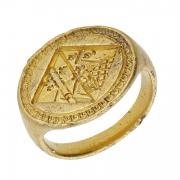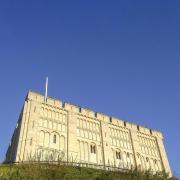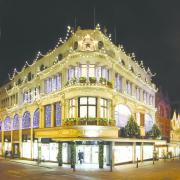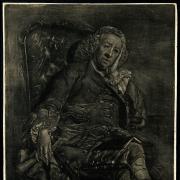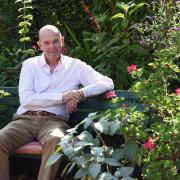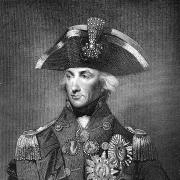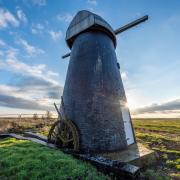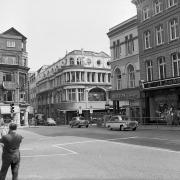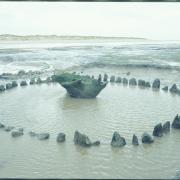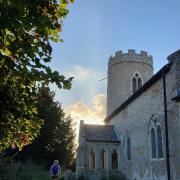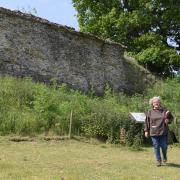Chris Armstrong investigates the sad case of Harold Davidson, Rector of Stiffkey
On March 29 1932 at Church House, Westminster began a trial which was to dominate the press for weeks. The case was brought by the Bishop of Norwich, against the Revd Harold Davidson, Rector of Stiffkey on five charges, each alleging immorality with young women. Davidson arrived to face the charges smoking a large cigar, accompanied by his wife and a group of supportive parishioners.
Davidson was not a typical Norfolk country parson. He spent all week in London, returning home at weekends to take services. In London he spent his time approaching girls who were either already prostitutes or, in Davidson’s view, at risk of becoming so. He was proud to be called ‘The Prostitute’s Padre’ and throughout his life he maintained that he had been called by God to minister to these girls.
Rarely can a trial have comprised such a combination of apparent vindictiveness, farce and tragedy; a certainly, even nearly a century later, the verdict of few trials remains as controversial. The case was heard by the Chancellor of the Diocese of Norwich, F Keppel North, and lasted 25 days. The evidence offered was grist to the mill of public prurience.
The prime witness was Barbara Harris who claimed to have been approached by Davidson when she was 16. He had, she alleged, claimed to have mistaken her for a famous film star as a precursor to inviting her for a meal. He had later visited her digs, introducing himself to her landlady as her uncle, and paying her rent.

She had subsequently moved in with him and fended off his attempts to seduce her. Further she claimed that he had keys to the flats of many other girls. She had written to the bishop complaining of Davidson’s behaviour.
Barbara Harris was not an ideal witness. She clearly enjoyed the temporary fame her evidence brought her, arriving early at court to make herself available to the press, and dressed to the nines for her moment of glory. Under cross examination she didn’t so much admit, as boast about her varied sexual experiences.
She even admitted in court that she was prepared to lie about anything for money. For some reason, in spite of this, the Chancellor appeared to swallow whole everything she said. Davidson’s counsel was moved to take the extraordinary step of telling the Chancellor in open court that it would help if he were to keep an open mind!
One further potential witness, Rose Ellis, was eventually not called. She had given a statement to the effect that she had had a relationship with Davidson to a private detective hired by the bishop’s legal adviser, Henry Dashwood.
The snag was that not only had she allegedly been bribed by the detective but, worse, her statement had been given after he had got her intoxicated on port and lemon – when she sobered up she withdrew her statement.
There was plenty of circumstantial evidence. Dashwood’s private detective, investigating Davidson’s London life, interviewed more than 40 of the girls he had contacted, Rose Ellis was apparently the only one prepared to complain about the nature of his approach. But a number of coffee houses had banned him and several of the girls he took there did say that he was inclined to pester them.

Sometimes he would approach the girls in clerical garb, on other occasions he would gain their interest by playing the part of an impresario. He had helped some of the girls financially – in the case of Rose Ellis he had paid for her treatment for syphilis.
He had, on occasion, taken girls to Paris ‘to try and find them employment’, and sometimes brought them to Stiffkey to stay at the rectory, where Mrs Davidson, they claimed, had treated them as skivvies. Shades here of Gladstone as Prime Minister going out into the street to invite prostitutes to come and take tea in the kitchen with Mrs Gladstone.
But none of this was really concrete evidence of guilt in respect of the matters with which he was charged. What probably sank him in the end was the introduction into evidence of a photograph of him with a 15-year- old girl, Estelle Douglas, the daughter of a friend, who was naked.
The credibility of this photograph is questionable, on two counts. First some experts felt that the quality of the photograph suggested that it might be a construct of two separate exposures. Second, it transpired that the photographers concerned had probably been employed by the same detective who had sought to bribe Rose Ellis.

Davidson was to claim that the intention had been to use the photoshoot to launch Estelle’s modelling career and that he had been told that she would be wearing a swimsuit under the cloak she had been holding and that when the cloak was whisked away, he was astonished at her nakedness.
Davidson himself was not the best of witnesses in his own defence. With a pre-ordination career on the stage, sometimes in comic roles, he may not have exhibited the level of gravitas his situation demanded. Further he caused incredulity when asked about an occasion on which Rose Ellis reportedly lanced a boil on his bottom for him by claiming not to be aware of the meaning of the word ‘buttock’ a claim much mocked in the tabloid press.
The punishment was announced back in Norwich, in the cathedral. Davidson arrived late, having sent an insouciant little telegram to the bishop explaining that he was delayed, and suggesting a meeting after sentence to discuss parish matters. His arrival at the cathedral was greeted with cheers from his supporters but that was the only good moment for him. The sentence was the most severe possible and he left having been de-frocked.
If much of the trial seemed like farce, reading the evidence and the background correspondence left me wondering whether Davidson’s treatment was as much actuated by vindictiveness as a genuine wish to purge the church of an embarrassment. Not on the part of the bishop, but on the part of his adviser, Henry Dashwood.
One account actually suggests that the bishop was unaware that Dashwood was having Davidson investigated until presented with a recommendation for prosecution. He was said to have had reservations about proceeding with the case – it might have been better for everybody if he had not done so.

Certainly, Dashwood was most determined in his efforts to find evidence. He visited Stiffkey personally in pursuit of it, only to find that Davidson enjoyed a high level of support from his parishioners and churchwardens. This may have surprised him as the original complaint about the Rector came from a local landowner, Major Hamond, who had been in a personal dispute with Davidson, and who was later to be fined by the bench of which he was himself a member for administering a kick to Davidson’s bottom.
Dashwood’s repeated use of the services of a private detective who was unable to find much by way of evidence without resorting to bribery, and who allegedly arranged for some rather doubtful photographic evidence to be presented doesn’t suggest an open mind, either. Finally, even after the case was over Dashwood intervened to prevent Davidson, by this time desperately trying to raise funds for an appeal, receiving money he was due. It is difficult not to see this as vindictiveness.
And after the farce and the vindictiveness followed the tragedy. Davidson, deprived of the opportunity to pursue his calling, went back to his theatrical ways in the hope of raising finance to pursue an appeal.
He arranged to sit in a barrel at Blackpool. The barrel had a window through which he could be observed by a paying public, and a chimney to allow the smoke from his cigar to escape. That show had a short run; the local council, deciding that the vast crowds who queued to see him constituted an obstruction, called a halt.
Undeterred, Davidson exhibited himself in an open coffin packed with ice and later in a glass cage where he was prodded in the posterior by a mechanical imp using what looked like a giant toasting-fork. In his desperation to raise funds he was reported to have applied for a number of jobs, including, bizarrely, the managership of Blackpool Football Club.
Previous debts caught up with him and he served a term of nine days in Walton Jail, in Liverpool. According to the local press the sentence was spent in the prison hospital being treated for injuries received while shinning down a drainpipe with bailiffs in pursuit.

Moving over to the east coast he met his nemesis in Skegness. This resort, which the old railway posters always claimed was bracing, was, perhaps too bracing.
As an amusement park side-show, he would aver his innocence before sharing a cage with two elderly lions. In late July 1937 he entered the cage as usual but, it is thought, accidentally stood on the tail of the lioness Toto.
Freddie the lion took exception to this, and locking his jaws on Davidson’s neck, dragged him round the cage and dumped him, at which the 16-year-old girl in temporary charge of the show bravely dragged him out of the cage severely injured. He died within a couple of days, though there were rumours that his death was caused by a dose of insulin administered by a local doctor who thought, wrongly, that he was diabetic.
Whatever else he was it seems fair to assume that Davidson was a naïve man if a brave one, considering the risks he took paying attention to girls whose pimps and minders would not have taken kindly to his interventions. Whether he was also a sex-maniac as suggested by some commentators, seems to me less certain. The interest in his story has led to several books, to two musicals and radio and television plays, but one is left with a nagging doubt as to whether he received justice.
What is without question is that his descendants believe he was innocent, and there have been a number of attempts to have the case re-opened. Sadly, given the passage of years it’s not just the evidence which would have to be dug up, but the witnesses too, so it seems unlikely that any review will take place.
Those wishing to hear more about the remarkable Rector of Stiffkey are referred to Chris Armstrong’s book Scholars, Saints and Sinners (Poppyland Publishing, 2019).





